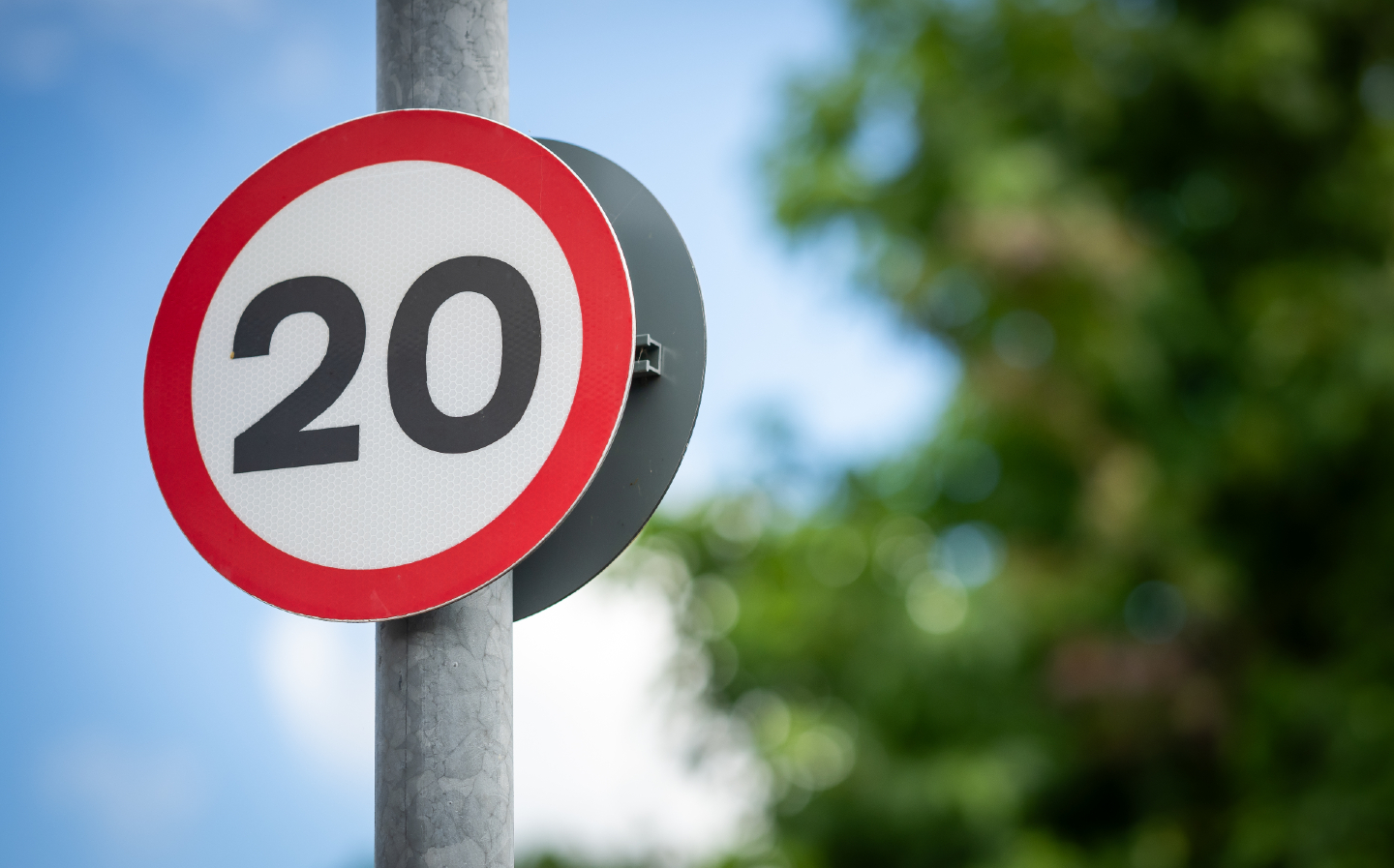New 20mph limits: do they save lives, or are they just adding time to essential journeys?
Journey times will only increase by an average of 63 seconds, it is claimed
Wales has introduced new 20mph speed limits on roads in the vast majority of its urban areas, with the expectation that the rest of Great Britain and Northern Ireland will follow suit. Up to 28 million people in the UK — or roughly two-in-five — may soon live in areas with 20mph speed-limit zones.
The country-wide change in Wales came into effect yesterday (Sunday, September 17) and has seen 30,000 signs altered to reflect the new, lower limit, which affects around 7,700 miles of road in total.
But why have 20mph limits replaced 30mph, and do they really improve safety?
Spain took the lead
In the UK, it is Wales which might have made the first widespread move to a default 20mph limit in urban areas on restricted roads, such as residential areas and busy pedestrian streets — replacing the more typical 30mph restriction — but many other councils and authorities have either implemented similar schemes, or are planning to do so in the near future.
Speed campaign group “20’s Plenty” says that most major cities in the UK now have many 20mph zones on their streets, especially in residential boroughs, but even rural areas are now considering following the Welsh lead, with Cornwall and the Scottish Borders reputedly mulling over the idea.
It adds that not a single one of 61 highway authorities in England which have implemented 20mph zones have switched them back to 30mph limits.
Proponents of the new lower limit say its main benefit is safety. Indeed, the shining example most supporters of the 20mph zones cite is Spain, which introduced its own country-wide 30km/h restriction — that’s about 19mph — on all single-carriageway roads in urban areas in 2021. Figures from 2022 show that the number of pedestrians killed in these areas had been reduced by 13 per cent, compared to pre-pandemic levels.
And the Llywodraeth Cymru (Welsh Government) claims that a public health study suggests its new 20mph limits will see, annually, a 40 per cent reduction in collisions, between six and ten lives saved, and anything from 1,200 to 2,000 people avoiding injury as a result.
What are the claimed costs and benefits of 20mph limits?
The government said the introduction of lower limits have totalled up to £32 million. However, it countered by saying that, according to a public health study, the savings to the NHS brought about by casualty prevention could be as much as £92m each year — more than outweighing the initial expense of bringing the 20mph zones to bear.
Yet David TC Davies, the Secretary of State for Wales, says the limits will hit the economy by £150m, totting up to a massive £4.5 billion over the next 30 years.
The Welsh Government has cast doubt on that figure, saying the method for calculating it is under scrutiny and that the £4.5bn “may not be an accurate reflection of the true cost”. The only negative financial impact to the change is slightly increased journey times, it added, though claims journey times will only increase by an average of 63 seconds.
This, it adds, is in the context of nine lives per year being saved and a further 98 serious injuries prevented. Additionally, the government says that for every 1mph people drive slower in urban areas, it reduces the number of collisions by six per cent.
Another possible beneficial by-product of reducing the speed limits from 30- to 20mph is a reduction in CO2 emissions from vehicles, although initial studies suggested it was fewer NOx particles that was the bigger gain from a 20mph limit.
Public opposition outweighs backing
Despite the claimed benefits, the debate over the implementation of the scheme is raging. While supporters claim no one in their right mind would oppose a speed limit which will make roads safer outside schools and hospitals, where there are plenty of other vulnerable road users, others are focused on the extensions to journey times and claim there will be significant delays.
The Welsh Government has also been accused of ignoring the voice of the people by Natasha Ashgar MS, the Welsh Conservative Shadow Minister for Transport. She said two petitions opposing the proposal, one delivered to the Welsh Government in May, and another signed online at change.org, were overlooked, despite the fact that more than 100,000 people contributed to them. She added that just 6,000 people took part in the government’s initial consultation for the scheme.
The Welsh Government originally trialled the 20mph zones in eight areas across the country, before the legislation for the widespread adoption of the limit was approved by the Senedd (parliament) in July 2022.
Not a blanket change to 30mph zones
Confusion also surrounds whether the introduction of the default 20mph limit is a blanket change to 30mph zones or not. Many have said it is every 30mph road in Wales which has dropped to 20mph, but equally the Welsh Government’s own website on the matter says that is not the case; it says that while the majority of urban 30mph roads — where there are streetlights — would be reduced to 20mph limits, there are still many roads which adhere to 30mph across the country.
Related articles
- If you found the story on the new 20mph speed limits in Wales interesting, you may be interested in how France is changing to ‘reward’ traffic lights to penalise speeders
- You might also like to read this story about Jaguar’s prototype system that ‘talks’ to traffic lights to relieve congestion
- Did you know that nearly half of all drivers admit to speeding on country roads?
Latest articles
- Omoda 5 prototype review: Bargain family SUV is solid first effort for new Chinese brand
- Dacia Duster 2024 review: Rugged, affordable SUV modernised with electrification and quite the glow up
- Audi A3 Sportback 2024 review: Softly, softly, catchy premium hatchback buyer
- New electric-only Mini Aceman fills gap between Mini Cooper hatch and Countryman SUV
- Tesla driver arrested on homicide charges after killing motorcyclist while using Autopilot
- Porsche Macan 2024 review: Sporty compact SUV goes electric, but is it still the class leader for handling?
- F1 2024 calendar and race reports: What time the next grand prix starts and what happened in the previous rounds
- Aston Martin DBX SUV gets the interior — and touchscreen — it always deserved
- Nissan unveils bold look for updated Qashqai, still made in UK














